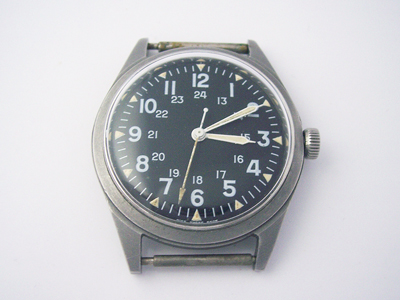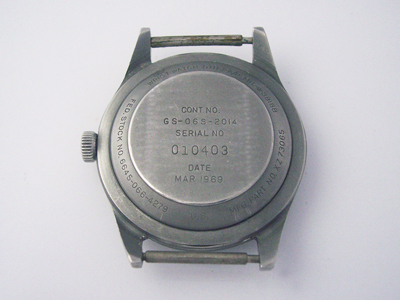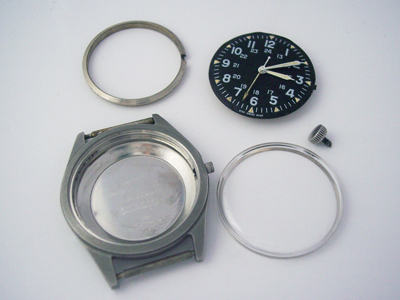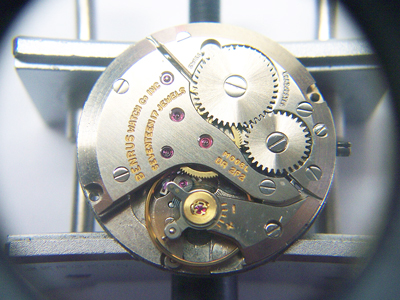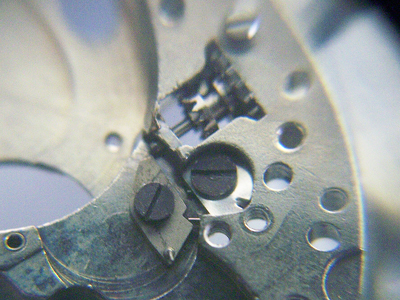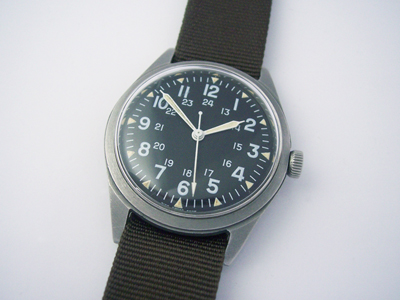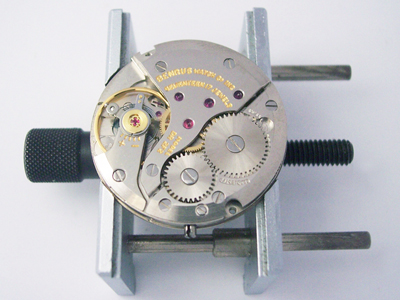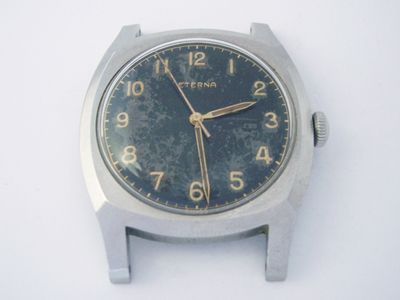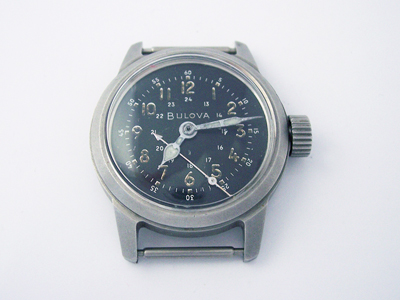The majority of military watches on the blog so far were issued to British service personnel, but this time it’s an American Benrus DTU-2A/P.
(Click pictures to enlarge)
One of several US watch companies to help the war effort, Benrus produced wristwatches for WWII service personnel as well as timing devices for bombs and other weaponry. Although seen as a burden to most, the war years were particularly good for Benrus.
As all the other contributing US watch companies (Waltham, Elgin and Hamilton) had manufacturing bases in the US, they were required to produce additional items, often unrelated to their core business which required modifications to their production facilities. As Benrus didn’t have a manufacturing base in the US, they avoided these ‘distractions’ and continued to import movements for their own watches from Switzerland. This allowed them to steal a march on their competitors and increase their share of the civilian market both during and after the war.
In 1962 the Department of Defence revised the existing MIL-W-3818A standard for military wristwatches with the aim of increasing quality, removing the need to re-test all watches every year, and to introduce a new case design. As a result of the changes a number of companies submitted watches to the DoD for testing, namely; Longines-Wittnauer, Mathey-Tissot, Bulova, Benrus and Clinton. Of all the models submitted, the Benrus DTU-2A/P was the only watch to meet their strict requirements and was subsequently supplied to military personnel between 1964 and 1969.
Turning the watch over, you’re confronted with an array of information; the Federal Stock, Mil. Spec., and Manufacturing Part numbers around the bevelled section, the Contract and Serial numbers in the centre along with the issue date, March 1969 in this case. (According to the current owner, this watch was bought from a house sale in Minneapolis from a Vietnam veteran who had photographs of his time serving in Vietnam war – all good provenance.)
You’ll notice that the case has regular spring bars rather than the fixed spring bars seen on the majority of military watch, and that the caseback shows signs of ‘Nato rash’ – a wear pattern often seen running up the centre of the caseback on any watch that has been worn for a long time on a Nato strap.
Much like the Hamilton W10 issued to British service personnel, the Benrus is housed in a one-piece case. The split stem has be separated first, followed by the removal of the crystal to gain access to the movement which sits in a spacer inside the case to ensure a secure fit.
The movement inside is a Benrus cal. DR 2F2, a manually wound 17 jewel calibre based on the ETA cal. 2370. Benrus modified the base calibre to add a ‘hacking’ mechanism which was required to adhere to the military specification.
A hacking mechanism is a means of temporarily stopping the watch – when the crown is pulled out to set the time, the second hand stops so the watch can be synchronised with another timepiece. The mechanism in the Benrus calibre is shown below, and like many others is a pretty simple affair.
The mechanism is little more than a spring loaded lever with a pin mounted on it. When the crown is pushed all the way in, the end of the stem presses on the hacking lever and moves the pin away from the balance wheel. When the stem is pulled out, the lever swings across under the tension from the spring on the right and the pin arrests the balance. Simple, but effective.
The movement was in good condition and needed no more than a routine service, and the rest of the watch was in good cosmetic condition too with the original lume still intact on the hour markers and hands. The only problem was the second hand which had tarnished and the lume (which would originally have been along the length of the hand with an orange tip) had deteriorated into dust and had to be removed.
Here’s the watch back in service.
Rich.
** Many thanks to Joel Uden for letting me feature his watch on the blog. **

